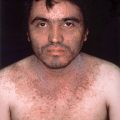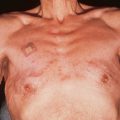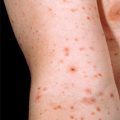Chapter 49 Sunscreens and prevention of skin cancer
American Academy of Dermatology. Available at: http://www.aad.org. Accessed August 3, 2010.
American Cancer Society. Available at: http://www.cancer.org. Accessed August 3, 2010.
Skin Cancer Foundation. Available at: http://www.skincancer.org. Accessed August 3, 2010.
| SKIN PHOTOTYPE* | UNEXPOSED SKIN COLOR | SUN RESPONSE HISTORY |
|---|---|---|
| I | White | Always burns, never tans |
| II | White | Always burns, tans minimally |
| III | White | Burns minimally, tans gradually and uniformly |
| IV | Light brown | Burns minimally, always tans well |
| V | Brown | Rarely burns, tans darkly |
| VI | Dark brown | Never burns, tans darkly |
* Based on the first 30 to 60 minutes of sun exposure of untanned skin after the winter season.
Key Points: Health Benefits of Solar Radiation
Table 49-2. Sunscreens That Block UVB and UVA
| PRODUCT NAME | SPF | MANUFACTURER |
|---|---|---|
| Aveeno Continuous Protection | 30, 50, 55, 70 | Johnson and Johnson |
| Aveeno Baby | 55 | Johnson and Johnson |
| Banana Boat | 15, 30, 50 | Sun Pharmaceutical |
| Bull Frog | 36, 50 | Chattem |
| Clinique Sunblock | 15, 30, 45, 50 | Clinique |
| Coppertone Water Babies | 50, 70 | Schering-Plough |
| Coppertone Nutrashield | 30, 70 | Schering-Plough |
| Coppertone Sport | 15, 30, 50, 70 | Schering-Plough |
| Estee Lauder | 15, 30 | Estee Lauder |
| Hawaiian Tropic Shear Touch | 15, 30, 50 | Tanning Research |
| Hawaiian Tropic Ultimate | 55, 70, 80 | Tanning Research |
| Hawaiian Tropic Baby Faces | 50, 60 | Tanning Research |
| Neutrogena Ultra Sheer | 55, 70, 85 | Neutrogena |
| Neutrogena Sensitive Skin | 30 | Neutrogena |
| Neutrogena Baby | 60 | Neutrogena |
| No-Ad | 15, 30, 45 | Sun and Skin Care Research |
| No-Ad Babies | 50 | Sun and Skin Care Research |
| Pre Sun | 27, 30 | Bristol Myers |
| Mary Kay Sunscreen | 15, 30 | Mary Kay |
| Vanicream Sunscreen Sport | 35 | Pharmaceutical Specialties |
| CHEMICAL | MAXIMUM CONCENTRATION USED (%) |
|---|---|
| Aminobenzoic acid | 15 |
| Avobenzone | 3 |
| Cinoxate | 3 |
| Dioxybenzone | 3 |
| Homosalate | 15 |
| Menthyl anthranilate | 5 |
| Octocrylene | 10 |
| Octyl methoxycinnamate | 7.5 |
| Octyl salicylate | 5 |
| Oxybenzone | 6 |
| Octyl dimethyl PABA | 8 |
| Phenylbenzimidazole sulfonic acid | 4 |
| Sulisobenzone | 10 |
| Titanium dioxide | 25 |
| Trolamine salicylate | 12 |
| Zinc oxide | 25 |
Weinstock MA, Moses AM: Skin cancer meets vitamin D: the way forward for dermatology and public health, J Am Acad Dermatol 61(4):720–724, 2009.







